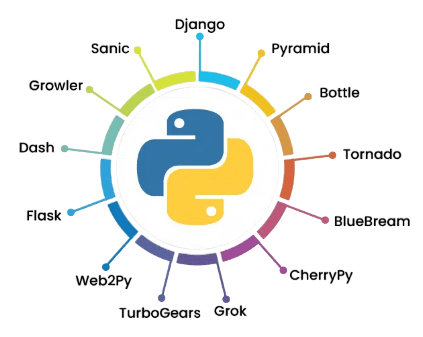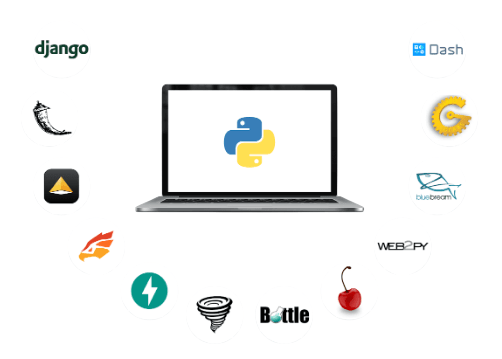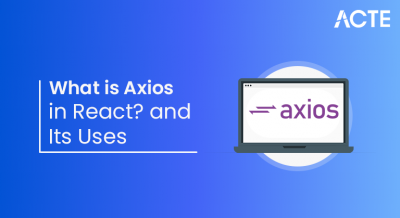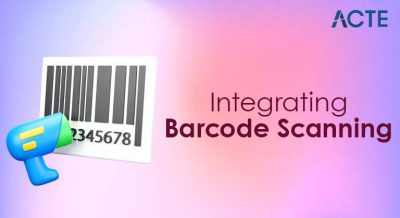
- Why Use Python for Web Development
- Overview of Python Frameworks
- Setting Up Python and Virtual Environment
- Basic Python Web App
- Routing and Views
- Working with HTML Templates
- Handling Forms and Requests
- Database Integration
Why Use Python for Web Development
Python is a powerful, versatile, and beginner-friendly programming language that has become one of the most popular choices among developers worldwide, particularly in web development. Its clean, readable syntax makes it easy to learn and understand, which significantly lowers the barrier to entry for beginners while remaining efficient for seasoned professionals. Python’s emphasis on simplicity and code readability supports rapid development, making it ideal for collaborative projects and large-scale applications where maintainability is crucial. One of Python’s greatest strengths is its extensive ecosystem, featuring a rich collection of libraries and frameworks tailored for a wide variety of tasks. For web development, frameworks like Django and Flask are especially prominent, often covered in Web Designing Training. Django is a full-featured, “batteries-included” framework suited for building complex, scalable web applications with built-in security features and an ORM (Object-Relational Mapping) system. Flask, on the other hand, is a lightweight, flexible micro-framework ideal for smaller projects or developers seeking more control over components. Beyond web development, Python’s adaptability extends to areas like data analysis, artificial intelligence, machine learning, and automation, thanks to robust libraries such as Pandas, TensorFlow, and Selenium. Its strong interoperability with other languages and platforms enhances its versatility, allowing developers to integrate Python seamlessly into diverse tech stacks. Additionally, Python benefits from a vibrant, active community that continuously contributes to its growth, along with comprehensive documentation and regular updates. These factors make Python a sustainable and reliable choice for developing secure, maintainable, and scalable web applications in today’s fast-evolving digital landscape.
To Earn Your Web Developer Certification, Gain Insights From Leading Data Science Experts And Advance Your Career With ACTE’s Web Developer Courses Today!
Overview of Python Frameworks
Python frameworks play a crucial role in accelerating web development by providing ready-made components and standardized ways to build applications efficiently. Among the most popular Python frameworks are Django and Flask, each catering to different project needs. Django is a comprehensive, high-level framework designed to handle complex, data-driven websites. It follows the “batteries-included” philosophy, offering built-in features like an Object-Relational Mapping (ORM) system, authentication, an admin panel, and security protections, while AngularJS CDN Integration simplifies adding AngularJS to web projects. This makes Django ideal for developers looking for a robust, all-in-one solution that promotes rapid development without compromising scalability or security. In contrast, Flask is a lightweight, micro-framework that offers greater flexibility and minimalism. It provides the core tools to build web applications but leaves architectural choices largely to the developer. Flask is well-suited for smaller projects or for those who prefer to customize components individually. Its simplicity and extensibility make it a popular choice for developers who want more control over their application’s structure. Other notable Python frameworks include Pyramid, which balances flexibility with a modular design for both small and large applications, and FastAPI, which focuses on high performance and asynchronous programming, making it ideal for modern APIs and microservices.

Additionally, frameworks like Tornado provide support for real-time applications through non-blocking network I/O. Overall, Python’s diverse frameworks offer developers a range of options depending on project complexity, scalability requirements, and personal preferences. This rich ecosystem enables the development of secure, maintainable, and efficient web applications across various industries and use cases.
Setting Up Python and Virtual Environment
- Download and Install Python: Start by downloading the latest Python version from the official website; choose the appropriate version for your operating system and ensure you add Python to your system PATH during installation for easy access.
- Verify Python Installation: After installation, open your terminal or command prompt and run python –version or python3 –version; this confirms that Python is installed correctly and accessible globally.
- Check for pip Package Manager: Pip usually comes pre-installed with Python; verify its presence by typing pip –version, as pip is essential for installing third-party libraries needed in Python projects.
- Create a Project Directory: Organize your work by creating a dedicated folder for your Python project; this helps keep files and dependencies separate from other projects, which can prevent issues like What are Python KeyError Exceptions.
- Set Up a Virtual Environment: Inside your project folder, create a virtual environment using the command python -m venv env; this isolates your project’s dependencies from the global Python environment.
- Activate the Virtual Environment: Activate your virtual environment with the appropriate command on Windows use .\env\Scripts\activate, and on macOS/Linux use source env/bin/activate; this ensures you’re working inside the isolated environment.
- Install Packages Within the Virtual Environment: While the virtual environment is active, install necessary packages using pip (e.g., pip install numpy); this keeps dependencies confined to your project and avoids conflicts.
- Choose a Web Framework: Start by selecting a lightweight Python web framework like Flask or a more comprehensive one like Django. For beginners, Flask is often preferred due to its simplicity and minimal setup requirements.
- Set Up Your Project Environment: Create a project folder and set up a virtual environment to isolate dependencies as taught in Web Designing Training. Activate the environment and install the chosen framework using pip, for example, pip install flask.
- Create the Application File: Inside your project directory, create a Python file (e.g., app.py) which will serve as the entry point for your web app. This file will contain your app’s core logic and route definitions.
- Define Routes and Views: In the application file, define routes using decorators (e.g., @app.route(‘/’)). These routes map URLs to Python functions, which return HTML content or data to be rendered in the browser.
- Run the Development Server: Use the framework’s built-in server to test your app locally. For Flask, you typically run python app.py or set the FLASK_APP environment variable, then visit http://127.0.0.1:5000 in your browser to see the app in action.
- Add Templates for Dynamic Content: To serve dynamic HTML pages, create template files using a templating engine like Jinja2 (Flask’s default). Templates allow you to inject variables and control page structure, making your app more interactive.
- Expand with Forms and Database: Enhance your basic app by adding form handling for user input and integrating a database like SQLite or PostgreSQL to store and retrieve data, paving the way for more complex web applications.
- Use a Templating Engine: Python web frameworks like Flask and Django use templating engines (e.g., Jinja2 for Flask) to render dynamic HTML pages. These engines let you mix Python-like expressions with HTML to generate content on the fly.
- Set Up a Templates Directory: Create a folder named templates in your project directory. Most frameworks automatically look for HTML files in this folder. Place all your .html template files here to keep them organized and accessible.
- Create a Base Template: Design a base HTML file (e.g., base.html) that includes the common layout elements like headers, navigation bars, and footers, a fundamental step in How to Become a Front End Developer.
- Use Template Inheritance: Leverage template inheritance to extend your base template. Use {% extends ‘base.html’ %} in child templates and define custom content blocks using {% block content %}{% endblock %}. This allows each page to have a unique layout within a consistent structure.
- Pass Data to Templates: Pass variables from your Python code to HTML templates using render_template() (Flask) or render() (Django). Inside the template, access the variables using {{ variable_name }} to display dynamic content.
- Add Logic to Templates: Use control structures like if statements and for loops inside templates to conditionally render content or iterate over data, making pages more interactive and data-driven.
- Link CSS and JS Files: Store static files (CSS, JavaScript) in a static directory and link them in your templates using the framework’s helper functions. This enhances user experience through styling and interactivity.
Would You Like to Know More About Web Developer? Sign Up For Our Web Developer Courses Now!
Basic Python Web App

Routing and Views
Routing and views are fundamental concepts in web development that dictate how web applications handle user requests and generate responses. Routing is the process of mapping URLs to specific functions or methods in the application. When a user visits a particular URL, the routing system determines which piece of code should run to handle that request. In Python frameworks like Django and Flask, routing enables developers to define clean, human-readable URLs that correspond to different pages or functionalities within a website or web application. Views, on the other hand, are the functions or classes responsible for processing incoming requests, interacting with data models if necessary, and returning the appropriate response, which is essential knowledge when exploring Web Development Languages To Learn. This response is often an HTML page rendered with dynamic content, but it can also be JSON data for APIs or redirects to other URLs. Views act as the intermediary between the user’s browser and the underlying data or business logic of the application. In Django, routing is handled through URL patterns defined in the urls.py file, where each pattern links a URL path to a view function or class-based view. Flask uses decorators directly on functions to map URLs, providing a straightforward and flexible approach. Both frameworks support dynamic routing, allowing parts of the URL to serve as variables that views can use to customize responses. Together, routing and views form the backbone of the request-response cycle in web development, enabling developers to organize their applications logically and deliver dynamic, user-specific content efficiently.
Are You Interested in Learning More About Web Developer? Sign Up For Our Web Developer Courses Today!
Working with HTML Templates
Handling Forms and Requests
Handling forms and requests is a vital aspect of building interactive web applications, allowing users to submit data that the server can process. When a user fills out a form on a website whether for registration, login, or feedback the browser sends this data to the server via HTTP requests, usually using POST or GET methods. In Python web frameworks like Django and Flask, managing these requests efficiently is essential to creating smooth user experiences and maintaining application security. In Django, forms are handled using the built-in forms module, which simplifies form creation, validation, and rendering. Developers define form classes that specify fields, data types, and validation rules. When a form is submitted, the view processes the incoming request, validates the data, and either saves it to the database or returns error messages for correction, which is a key concept in What is PHP Developer. Django’s form handling also helps protect against common web vulnerabilities such as Cross-Site Request Forgery (CSRF) by automatically including tokens in forms. Flask provides a more minimalistic approach where developers manually handle form data from the request object. Libraries like Flask-WTF extend Flask’s capabilities by adding form validation and CSRF protection, similar to Django’s system.
Database Integration
Database integration is a fundamental part of web development, enabling applications to store, retrieve, and manipulate data efficiently. For Front-End Developers working with Python backends, understanding how databases connect with web frameworks is essential to build dynamic, data-driven applications. Python frameworks like Django and Flask provide robust tools to interact with databases seamlessly. Django includes a built-in Object-Relational Mapping (ORM) system that allows developers to work with databases using Python classes instead of writing raw SQL queries. This abstraction simplifies database operations, making it easier to create, read, update, and delete records while maintaining database portability. Django’s ORM supports multiple database backends, including PostgreSQL, MySQL, SQLite, and Oracle, topics frequently covered in Web Designing Training. Database integration also involves managing migrations changes to the database schema over time. Django’s migration system automates schema changes, while Flask developers often use Alembic alongside SQLAlchemy for this purpose. Overall, database integration in Python web development allows applications to maintain persistent data, support complex queries, and scale efficiently. By leveraging ORMs and migration tools, developers can focus more on application logic while ensuring reliable, maintainable data management.





